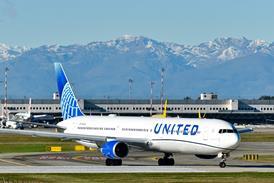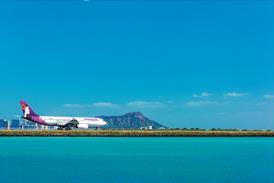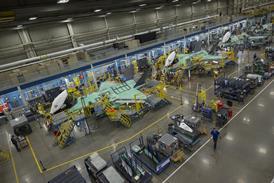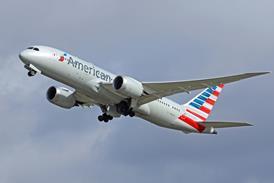Even the most experienced of forecasters has been forced to admit that 1998 was a difficult year to call. As the year progressed and the Asian crisis continued to unfold, so the prospects just kept getting worse. And as the airline industry embarks on an uncertain 1999, it now seems that the long-anticipated downturn could finally get into full swing.
The International Air Transport Association (IATA) was among those that began to slash their growth forecasts as the year wore on. At the outset, the guess had been for growth in international passengers to stay at around the 7% for the next two or three years. In the event, IATA now concedes that the final figures for 1998 are likely to come out at no better than 4.7%. "1998 has been subject to the most radical downward revision within the year in any year for a long time," concedes IATA director general Pierre Jeanniot.
Inevitably the damage came from the lingering crisis in Asia. It now looks as though international passenger growth in the region slowed to a standstill in 1998 - with the north east, including Japan, registering an outright fall of some 1.6%, and the former powerhouse of South-East Asia managing a rise of less than 1%.
What happens next is largely dependent on the world economy. The tentative forecasts to date are for a general slowdown in the booming US and European markets but nothing yet approaching outright recession. At the same time, the fragile economies of the former Asian tigers appear to be edging towards a recovery of sorts. Even in Japan there is talk of being over the worst.
Barring any further financial crises, that should allow airline traffic growth to get back on track a little this year and next. Indeed IATA's latest mid-term Passenger Forecast, issued towards the end of last year, starts from the premise that the worst may now be over. Admittedly, the figures are a percentage point or so below the more upbeat predictions that were coming out of IATA even six months ago, but they nevertheless show international passenger markets settling down to average growth of around 5.5%.
After the dismal performance of 1998, the forecast suggests that the Asian markets will also begin to climb back towards healthier growth international rates of 5-6% over the next five years. Domestic markets too are forecast to edge up after the devastating impact of the region's financial crisis - South Korea is estimated to have seen a 20% fall in domestic traffic for 1998, Malaysian travel sank 5%and others were little better than static.
Jeanniot warns that such forecasts are never infallible. Despite the recent indications about a soft landing for the US and European economies, his "gut reaction" is that the healthy 5-6%growth predictions for these regions may be "pitched too high" and that Asian traffic may yet recover faster than expected. "We were somewhat overly optimistic about Asian growth yesterday. We must guard against being overly pessimistic today," he says.
Jeanniot is equally quick to point out that traffic growth is not a guarantee of airline profitability. Caution is still needed in managing capacity, costs and yields. The early evidence for 1998 is that, in the face of rapidly softening demand, airlines failed to cut gear down capacity growth.
Estimates from the IATA member airlines suggest that international seat capacity grew at around 7% last year - twice the rate of revenue passenger kilometres. Unit costs appear to have fallen by an impressive 5.5%, but yields also dropped by 3.9%. On these estimates, the international airlines would be left showing a collective net profit of only $2.5 billion. That is half the level of 1997 and well short of the $3.9 billion that IATAhad cautiously been hoping for at the start of the year.
Carriers in the USA and Europe have pledged that this downturn will be different, stressing a new flexibility to cut back capacity fast if and when markets turn. 1999 may give a chance for them to deliver on that promise.
International traffic growth (1998-2002)
| 1998 | 1999 | 2000 | 2001 | 2002 | |
| Europe | 6.6 | 6.1 | 5.8 | 5.5 | 5.4 |
| Asia | 0.2 | 5.3 | 5.5 | 6.0 | 6.2 |
| North America | 5.4 | 5.5 | 5.5 | 5.6 | 5.4 |
| Latin America | 7.2 | 7.1 | 6.9 | 6.8 | 6.7 |
| Middle East | 4.2 | 5.7 | 6.0 | 4.8 | 4.9 |
| Africa | 3.7 | 5.1 | 4.9 | 5.1 | 5.0 |
| South Pacific | 1.3 | 4.8 | 5.6 | 5.2 | 4.8 |
source:IATA
Domestic traffic growth 1998-2002 (%)
| 1998 | 1999 | 2000 | 2001 | 2002 | |
| USA | 2.8 | 1.1 | -0.9 | 2.8 | 3.5 |
| Europe | 5.9 | 4.0 | 4.3 | -1.5 | 4.4 |
| Far East | -0.5 | -0.6 | 6.6 | 8.1 | 9.0 |
| World | 2.6 | 2.3 | 2.3 | 3.6 | 5.8 |
Source: Avitas
Source: Airline Business























